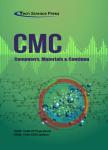Segmentation and Classification of Stomach Abnormalities Using Deep Learning
作者机构:Department of Computer ScienceHITEC University TaxilaTaxilaPakistanl 2College of Computer Science and EngineeringUniversity of Ha’ilHa’ilSaudi Arabial 3Department of SoftwareSejong UniversitySeoulKoreaGwangjin-guKoreal 4College of Computer Engineering and SciencesPrince Sattam Bin Abdulaziz UniversityAl-KhrajSaudi Arabial 5Faculty of Applied Computing and TechnologyNoroff University CollegeKristiansandNorway
出 版 物:《Computers, Materials & Continua》 (计算机、材料和连续体(英文))
年 卷 期:2021年第69卷第10期
页 面:607-625页
核心收录:
学科分类:08[工学] 0812[工学-计算机科学与技术(可授工学、理学学位)]
基 金:This research was financially supported in part by the Ministry of Trade,Industry and Energy(MOTIE)and Korea Institute for Advancement of Technology(KIAT)through the International Cooperative R&D program.(Project No.P0016038) in part by the MSIT(Ministry of Science and ICT),Korea,under the ITRC(Information Technology Research Center)support program(IITP-2021-2016-0-00312)supervised by the IITP(Institute for Information&communications Technology Planning&Evaluation)
主 题:Gastrointestinal tract contrast stretching segmentation deep learning features selection
摘 要:An automated system is proposed for the detection and classification of GI *** proposed method operates under two pipeline procedures:(a)segmentation of the bleeding infection region and(b)classification of GI abnormalities by deep *** first bleeding region is segmented using a hybrid *** threshold is applied to each channel extracted from the original RGB ***,all channels are merged through mutual information and pixel-based *** a result,the image is *** and deep learning features are extracted in the proposed classification *** transfer learning(TL)approach is used for the extraction of deep *** Local Binary Pattern(LBP)method is used for texture ***,an entropy-based feature selection approach is implemented to select the best features of both deep learning and texture *** selected optimal features are combined with a serial-based technique and the resulting vector is fed to the Ensemble Learning *** experimental process is evaluated on the basis of two datasets:Private and *** accuracy achieved is 99.8 per cent for the private data set and 86.4 percent for the KVASIR data *** can be confirmed that the proposed method is effective in detecting and classifying GI abnormalities and exceeds other methods of comparison.




